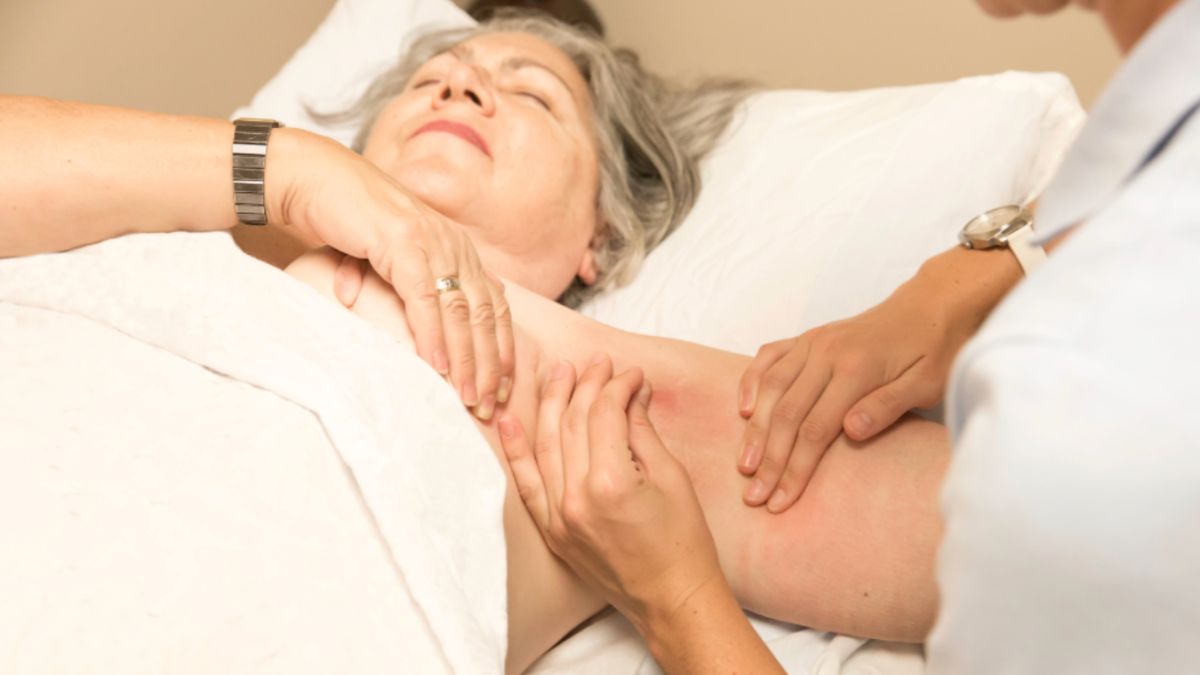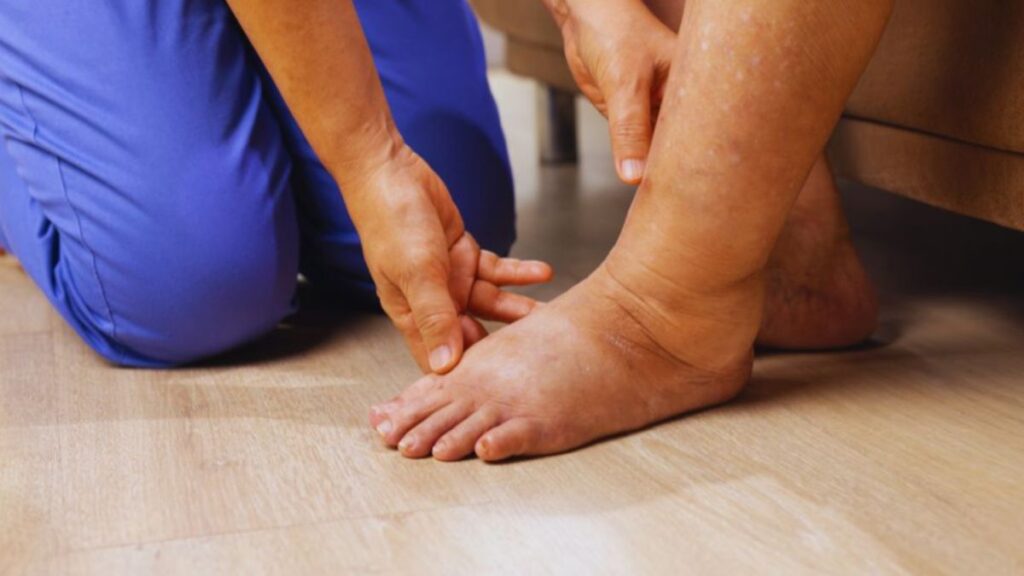Lymphedema Management:
Strategies for Reducing Swelling and Discomfort
By Midas Touch Lymphedema Institute
Table of Contents
ToggleLiving with lymphedema can feel overwhelming. The constant swelling, heaviness, and discomfort can make even simple daily activities difficult. Many people struggle to find relief and feel frustrated when the swelling persists. This condition can affect mobility, appearance, and confidence, leaving people searching for answers and support through effective lymphedema management.

At Midas Touch Lymphedema Institute, we deeply empathize with the challenges of living with lymphedema. Our mission is to support people in managing their symptoms and working toward an improved quality of life. With compassionate care and evidence-based methods, we provide support for individuals seeking to reduce swelling and improve comfort. Individual results may vary based on each person’s condition and circumstances. We focus on making treatment approachable and supportive for every individual we serve.
What Is Lymphedema?
Lymphedema is swelling that develops when lymph fluid builds up in body tissues, most often in an arm or a leg. It arises when the lymphatic system does not move fluid effectively, leading to fluid accumulation, discomfort, and swelling. Causes include hereditary conditions that affect the lymphatic system or lymph node damage from surgery or cancer treatment. If left untreated, this buildup may increase the risk of infections, stiffness, and skin changes, and swelling may persist. Effective care starts with understanding how lymphedema develops and how it affects the body.
The Common Symptoms of Lymphedema
Swelling in the Arms, Legs, Hands, or Feet
Swelling is the most common sign of lymphedema. It happens when fluid builds up in the tissues because the lymphatic system cannot drain it properly. This swelling often starts mild but can increase over time, making clothes or jewelry feel tight and daily activities more difficult without proper lymphedema management.
A Feeling of Heaviness or Tightness in the Affected Area
People with lymphedema often notice that an arm or leg feels unusually heavy or tight. Trapped lymph fluid causes this sensation and may reduce the range of motion. Over time, it can make walking, lifting, and other daily tasks more difficult, so consistent lymphedema management may help ease symptoms and support mobility.
Skin That Becomes Thick or Hard
As lymphedema progresses, the skin over the swollen area may thicken or harden. This change results from prolonged fluid buildup and stress on the tissues. The skin may feel tight, less flexible, or rough to the touch. Managing lymphedema early may help prevent or limit these changes and support healthier skin.
Limited Range of Motion
Swelling and heaviness may limit movement in the affected limb. People living with lymphedema may notice difficulty bending a knee, lifting an arm, or moving a wrist. This stiffness can affect exercise, work, and routine tasks. With appropriate guidance, exercise and therapy may help support mobility and flexibility.
Daily Habits That Support Lymphedema Management
Keeping the Skin Clean and Moisturized to Avoid Infections
Healthy skin is vital in lymphedema management. Washing regularly and using gentle moisturizers protect against dryness and cracking, which can allow bacteria to enter. Soft, well-hydrated skin supports the body’s natural barrier and may lower the risk of infection, which can worsen swelling. Making skin care part of your routine may help keep the affected area healthier and reduce the likelihood of complications.
Avoiding Tight Clothing That Restricts Lymphatic and Blood Flow
Tight clothing, socks, or jewelry can interfere with circulation and worsen swelling. People with lymphedema benefit from wearing loose, comfortable clothing that does not cut into the skin. Choosing breathable fabrics and avoiding elastic bands may support circulation and facilitate lymphatic fluid movement. This simple adjustment can support lymphedema management and may make it easier for the body to manage swelling.
Staying Active With Gentle Exercises to Support Circulation

Movement is a well-established way to support circulation in lymphedema management. Gentle exercises like walking, stretching, or light yoga keep muscles working, which helps push fluid through the lymphatic system. Staying active does not have to be intense—consistent, low-impact activity may help reduce stiffness, ease swelling, and support overall mobility.
Why Lymphedema Management Matters
Proper lymphedema management is vital because untreated swelling can become more severe and harder to control over time. The lymphatic system plays a key role in maintaining fluid balance and fighting infections. When it does not function correctly, fluid builds up in the tissues, causing discomfort and potential complications. By focusing on strategies like reducing swelling, improving circulation, and protecting the skin, people with lymphedema can live with greater ease. Early and consistent management can make daily activities easier, lower the risk of infections, and support long-term health and well-being.
Many clinicians use Complete Decongestive Therapy (CDT)—a program of skin care, exercise, manual lymphatic drainage, and compression—as a conservative approach to managing lymphedema; the specific program varies by individual.
The Role of Manual Lymphatic Drainage
Manual lymphatic drainage (MLD) is a gentle, hands-on technique that stimulates lymph flow and helps move excess fluid away from swollen areas. When used with compression, targeted exercise, and skin care, MLD may help reduce swelling and discomfort for some people; responses vary by individual. A trained professional performs MLD. In Florida, licensed clinicians practicing within their scope—such as physical therapists, occupational therapists, registered nurses, physicians, or licensed massage therapists—should provide MLD after completing recognized lymphedema-therapy training. Patients can verify a clinician’s license through the Florida Department of Health’s Medical Quality Assurance (MQA) online license verification tool.
What Is the Primary Management of Lymphedema?
Primary management of lymphedema is a coordinated, conservative program that aims to reduce swelling and lower the risk of complications. It typically includes compression therapy, manual lymphatic drainage, therapeutic exercise, and gentle skin care. These components work together to support circulation and help control fluid buildup. While lymphedema is a chronic condition without a cure, consistent, clinician-guided management may improve comfort and mobility; individual results vary.
How to Treat Lymphedema After Mastectomy?
Treating lymphedema after a mastectomy involves reducing swelling and protecting the affected arm. Common elements include wearing compression sleeves, practicing gentle exercises, and receiving manual lymphatic drainage. Skin care also plays a role in lowering infection risk. Because swelling often develops gradually, early lymphedema management may help keep symptoms under control and improve quality of life.
How Do You Manage Lymphedema in Your Legs Naturally?
Managing lymphedema in your legs naturally involves lifestyle habits that support circulation. Elevating the legs, doing light exercises like walking or swimming, and eating a balanced diet may help reduce fluid buildup. Wearing compression stockings can also help fluid move more effectively. While lymphedema does not currently have a cure, these strategies may make symptoms easier to manage over time.
What Causes Lymphedema in Cancer Patients?
The causes of lymphedema in cancer patients are related to lymphatic system damage during treatment. Surgery or radiation can remove or scar lymph nodes and limit fluid drainage, which can lead to swelling in the arms or legs, depending on the treatment area. Lymphedema management is important after cancer care and may help reduce swelling, lower infection risk, and improve comfort during recovery.

Lymphedema presents challenges, but it does not have to control your life. With consistent care and appropriate strategies, swelling and discomfort may be easier to manage. Midas Touch Lymphedema Institute provides lymphedema management services that use evidence-informed approaches to support everyday comfort and function. Our goal is to offer care and strategies that may help reduce swelling, support mobility, and improve comfort. With professional care and supportive guidance, we aim to make management accessible and practical for each person.
We develop individualized care plans with compassion and respect. If you or a loved one is living with lymphedema, consider scheduling an evaluation. Early assessment may support more effective management and help you feel more comfortable.
Insurance note: As of January 1, 2024, Medicare Part B may cover prescribed lymphedema compression treatment items (including standard/custom gradient compression garments, wraps, bandaging systems, and certain accessories) when medically necessary and ordered by an authorized practitioner; quantity limits and DMEPOS supplier requirements apply.
Midas Touch Lymphedema Institute
Medical Disclaimer: The information provided in this content is intended solely for general informational and educational purposes. It does not constitute medical advice, diagnosis, or treatment recommendations. Do not act upon or rely on any information contained herein without first consulting a licensed healthcare professional regarding your specific medical condition or concerns.
Health conditions and treatment needs vary from person to person. What is appropriate for one individual may not be suitable for another. Always seek guidance from your physician or another qualified healthcare provider before making decisions about your health, starting or stopping any treatment, or changing medications. Never disregard professional medical advice or delay seeking care because of something you have read in this content. In the event of a medical emergency, contact your physician, call 911, or visit the nearest emergency facility immediately.
For information regarding your rights as a patient in Florida, please refer to Florida’s legislation or regulations outlining your rights and responsibilities as a patient.
© All Rights Reserved.
Life Coaching
Services
Areas We Serve
Midas Touch Lymphedema Institute

